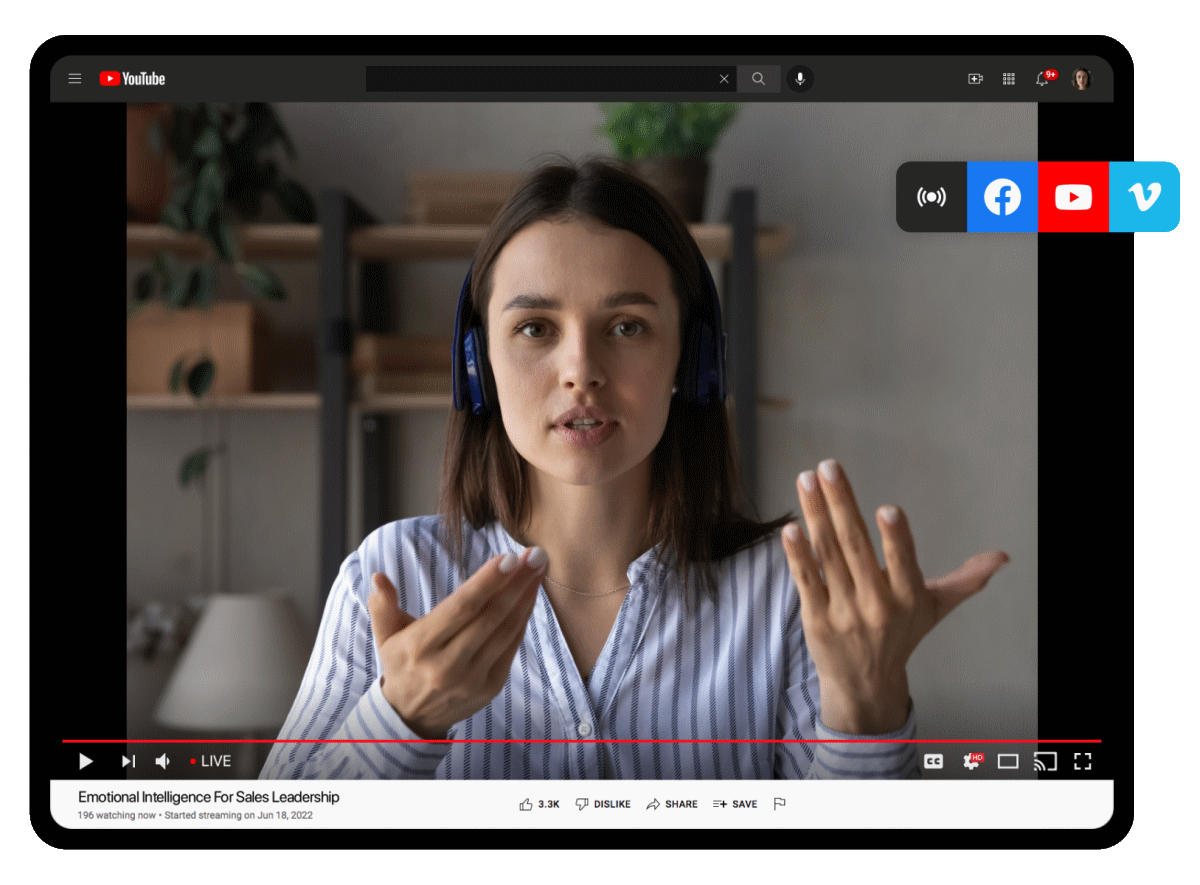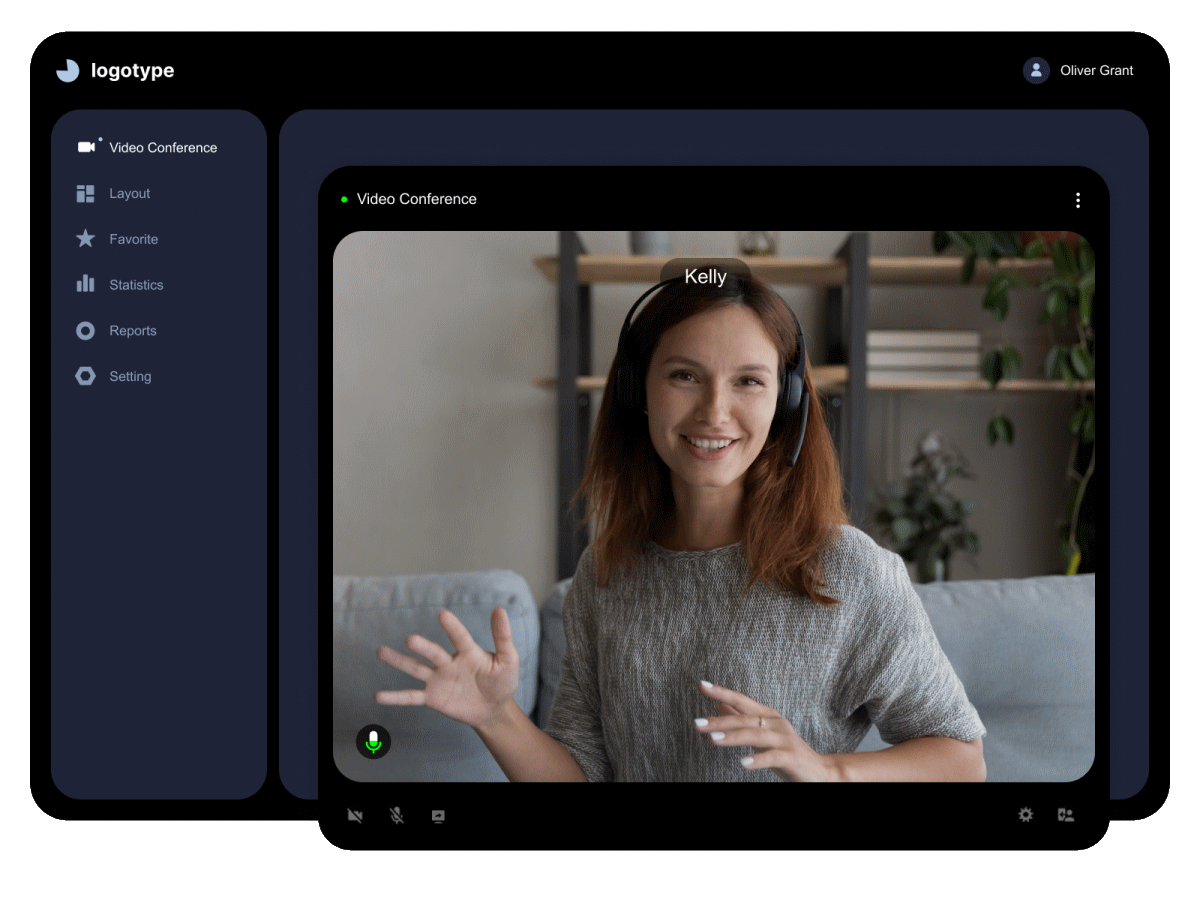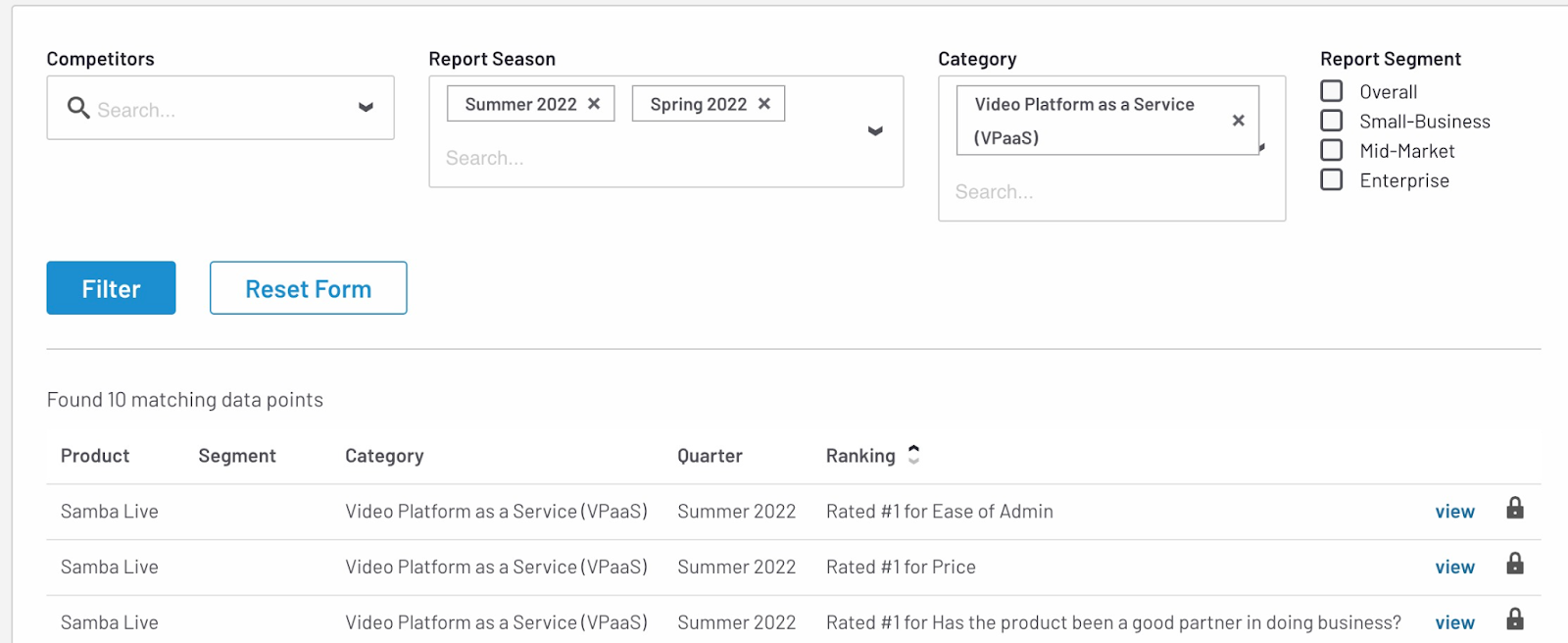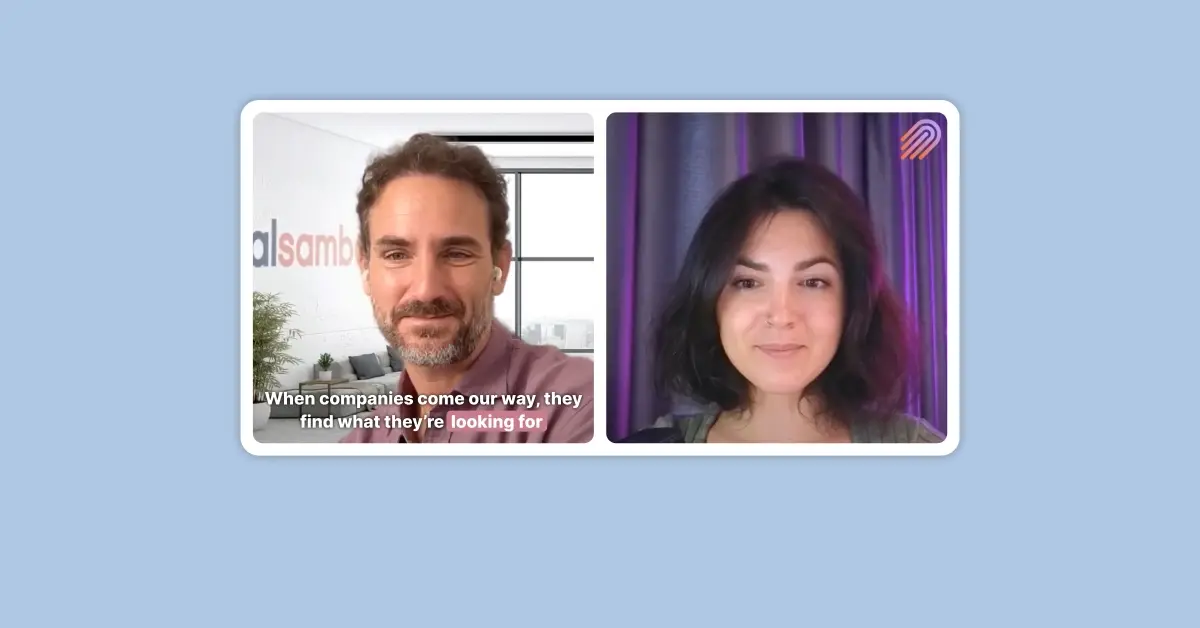Video Platform as a Service (VPaaS) in a Nutshell - A Complete Guide
Cloud services in general are a pretty abstract technical subject that business decisions still nevertheless have to be made.
The goal of this article is to explain Video Platform as a Service (VPaaS) in regular terms so that the regular, everyday normal business person can clearly understand the subject with enough clarity to be technically accurate and make the right informed decision for your business or organisation.
Table of contents
- Video Platforms as a Service – what does that even mean?
- How is this different from web hosting?
- How does VPaaS really work?
- Utilising the benefits of video platforms as a service
- What are the common use cases for using VPaaS? Do I really need this?
- Why Digital Samba, specifically for VPaaS?
What is a Video Platform as a Service (VPaaS)?
The world of tech lingo can be frustratingly confusing the first time you dip your toe into it. “I understand video… but platform? And why is it a service?” – Pretty dense vernacular to have to cut through there, isn’t it? Basically, the quick rundown is that video is actually pretty hard for computers to do.
So, VPaaS is when you get somebody else’s computer to support video for you and your organisation. You use this when your organisation has intermittent needs for lots and lots of videos.
It may be hard to imagine what “lots and lots of videos” really means, since sure, your laptop can play one or two videos at one time, sure– but imagine if you tried to play thousands, or tens of thousands of videos at once. You would need a really big computer! Now, imagine that your company only rarely needs a lot of video power– like if you’re hosting a webinar with hundreds or thousands of attendees every month. Do you want to build and maintain that big computer just to use it once a month?
No – you want to rent the big computer just when you need it. So the “Video platform” is a big computer designed to do lots of videos, and the “service” part is the fact that you rent the big computer just when you need it– as a service.
This is ultimately where VPaaS makes conceptual sense.
Clearly, this is a niche that other speciality businesses would crop up for who will rent out their big computers to handle the large but intermittent video demands of other businesses. But, there’s still more to explain– and several small pitfalls that can confuse regular mortal human beings.

How is this different from web hosting?
VPaaS is a form of web hosting– but it specialises in just the video and associated elements with that. As confusing as it sounds at first, it’s not uncommon for people to host their website with one web host, and the video elements with a VPaaS provider. So… what’s going on there?
VPaaS for your website that’s hosted with someone else
A website host is a generic form of web hosting. Websites are literally just files in a folder on a computer, and the internet is a protocol for computers to ask other computers for files, and web browsers are windows that assemble the files that they get from the internet into what we know as websites.
When you go to a web hosting provider; they are expecting you to use their service for putting web page files in a folder, and then having other computers ask for those web page files. They’re not expecting video– and they’re not built for video.
Having a website host serve video is a bit like taking a bicycle on the motor freeway.
The way websites get around this problem is they have just the video portion of their website hosted by a speciality video provider, who is expecting large video traffic and can easily handle it.
In these cases, your website hosting provider serves up their portion of the web page files, but when they get asked by someone to serve the video, they point to the video provider service. Following this approach, websites can benefit from the expertise of these specialty providers. For instance, integrating a VPS UK solution might enhance a site's ability to manage video content by offering dedicated resources, but it's not the primary solution for video hosting challenges. This is called embedding because you’re taking a normal webpage, and embedding another service or function inside the web page.
This is a bit like taking your bicycle to the train. The bike is great at its part, and the train is great at its part. A smart solution!
This is even more necessary for live video
Live video practically requires a VPaaS to be set up. This is because the live video does not work with files on a computer, but rather streams. Files are like letters in the mail. Streams are like telephone calls.
Anyone can use the mail. Telephones need a telephone service provider to maintain the infrastructure that connects you in real-time with your call partner. Live video works very similarly to that.

How does VPaaS really work?
Let’s say that there’s a live event host, a thousand attendees, and a website. The host wants to live-stream to the thousand attendees on the website. How does that get accomplished, and what is happening under the hood there?
Firstly, the host gets their camera and video setup ready, and they can stream their camera to the video platform. Streaming can be done from a normal web browser, but there is special software built to do just live streaming. Also note that the host is streaming to the video provider, and not the website here.
Their live stream gets to the video platform, which takes their stream and makes a thousand copies of it.
Next, when a thousand employees go to the website, the website host serves everything but the video elements to all the attendees. For the video element, it points the web browsers of the attendees to the video platform through something called an Application Programmer’s Interface, or API– basically, a way programmers get the software to work alongside other software. In this case, the website is basically drawing a border around where it wants the video to go, and then asking the VPaaS to step in and provide the video.
The video platform then streams the live video to each of the thousand attendees, where their web browsers take the live video and display it on a web page.
Utilising the benefits of video platforms as a service
VPaaS clearly has many benefits that businesses and organisations can take advantage of. Some of those benefits include:
- Cost-savings. VPaaS is less expensive than self-hosting in almost every case.
- Stability. Video works better when it’s being handled by tech companies specialising in that niche.
- Ease of development. VPaaS is easy to embed in other web applications and eliminates the headache of getting video to work well from a development standpoint.
- Scalability. VPaaS allows your usage to vary wildly, and you only pay for what you use.
- Security. Video platform service providers have their own internal security experts that comply with tough regulations like the GDPR so you do not have to.
- Third-party service. If something goes wrong, your service provider has to fix it.
- Much less liability exposure in virtual operations. Having video handled by a third party trims away liabilities and leaves your organisation with operational assets.
There are more small benefits to using VPaaS that can’t be listed, as they’re specific to each individual user! In some cases, VPaaS can open up whole new product lines, or marketing strategies for companies.

What are the common use cases for using VPaaS? Do I really need this?
VPaaS is commonly used when an organisation has a tech operation that involves getting live video to a large number of people– particularly when you are trying to build brand value and provide an on-brand, in-house video experience, such as but not limited to:
- Online learning environments
- Daily internal meetings
- Webinars and promotional video
- Product development
Why not just use Facebook, YouTube, or Google meetings?
These are services with their own merits, but none of these common tech company solutions offers users much control for delivering content consistently. From a promotional standpoint, YouTube and Facebook are firstly built to be advertising platforms; as their value is mostly in their vast user bases.
Marketing content such as webinars does not perform well as stand-alone content on these platforms. But advertisements on these platforms that direct to independent sales funnels can do quite well. Those sales funnels usually have promotional videos or live webinars, which is where using VPaaS can appropriately come in.
Google meetings and other similar services can be valid solutions for daily meetings for some companies, but these services are designed to pull companies into committing to service ecosystems. Google has Google Drive and other services that it counts on users to eventually use if you use any one of their services or products. They also collect and sell metadata which can be sensitive company information, or potentially invalidate company GDPR compliance.
Ideal meeting solutions for companies should be more inclined to integrate with existing IT operations that companies may have, such as LMT/LMS systems for training, or have other generic integration features such as a heavily emphasised development API.
In terms of product development, there may be some or many companies that repackage or re-use Google or Facebook services through an API, but this is actually fairly uncommon. Larger companies can and do change their back-end service availability and push updates that will break any software products that rely on API integration with these larger companies. This is because it is not quite possible to become a business priority for Google, Facebook, or Microsoft. For other small niche providers, it is natural for relationships with these companies to fall into a partnership role long-term. This offers better long-term stability for business relationships and is why speciality companies are actually the more common choice for integrating into existing business systems and playing key service roles in product development.
The general rule of thumb for why companies choose niche VPaaS providers is for control and autonomy. They allow you to retain brand value, and product control and develop a working relationship as a key business asset.

Why Digital Samba, specifically for VPaaS?
There are certainly many options for service providers available for video platform services for hire.
Digital Samba’s position in the market is we are a niche provider that gives high customer satisfaction through close working relationships. This makes us an excellent option for integrating live video features into software products that you can use to sell.
Some other strengths include our native European infrastructure and GDPR compliance, making Digital Samba one of the most compliant and secure service providers available in the European market– or for companies that would like to expand into the European market.
.png?width=1200&name=Digital%20Samba%20video%20API%20Embedded%20for%20meetings%20(1).png)
Additionally, Digital Samba is an early market leader in white-labelling, or rebranding someone else’s software as your own and marketing or selling it. This has led us to develop customisation features that are ahead of our competitors and has naturally segued into generic VPaaS at the end of an API.
If you're looking for a flexible, secure and scalable VPaaS solution, Digital Samba offers GDPR-compliant, white-label video solutions tailored to your needs. Book a live demo or contact our team today.
Frequently asked questions about VPaaS
1. What is the difference between VPaaS and regular video hosting?
VPaaS offers real-time, interactive video features like live meetings and webinars through APIs, while regular hosting usually serves static video files for playback. VPaaS is built for scale, control, and integration.
2. Is VPaaS suitable for startups and small businesses?
Yes. VPaaS platforms are scalable and typically charge based on usage, making them cost-effective for startups that need professional video without investing in infrastructure.
3. Can I customise the look and feel of a VPaaS video player?
Most VPaaS providers offer white-labelling and customisation through their SDKs, so you can match your branding and UX exactly as needed.
4. Is VPaaS GDPR-compliant?
Some VPaaS providers are fully GDPR-compliant, especially those based in the EU. Always check if the provider offers data hosting within Europe and has privacy certifications.
5. Why not just use Zoom or YouTube Live instead of VPaaS?
Zoom and YouTube Live don’t offer full API access or branding control. VPaaS gives you autonomy, better integration, and eliminates third-party branding or ads.
Explore enterprise SDK options with our Zoom SDK alternative comparison.
6. What are the main advantages of VPaaS for developers?
VPaaS simplifies video integration, scales automatically, reduces backend workload, and speeds up product development with ready-to-use APIs and SDKs.
Share this
You May Also Like
These Related Stories

Comparing VaaS vs VPaaS: A Guide to the Differences

Robert’s Journey with Digital Samba on the saas.unbound Podcast

